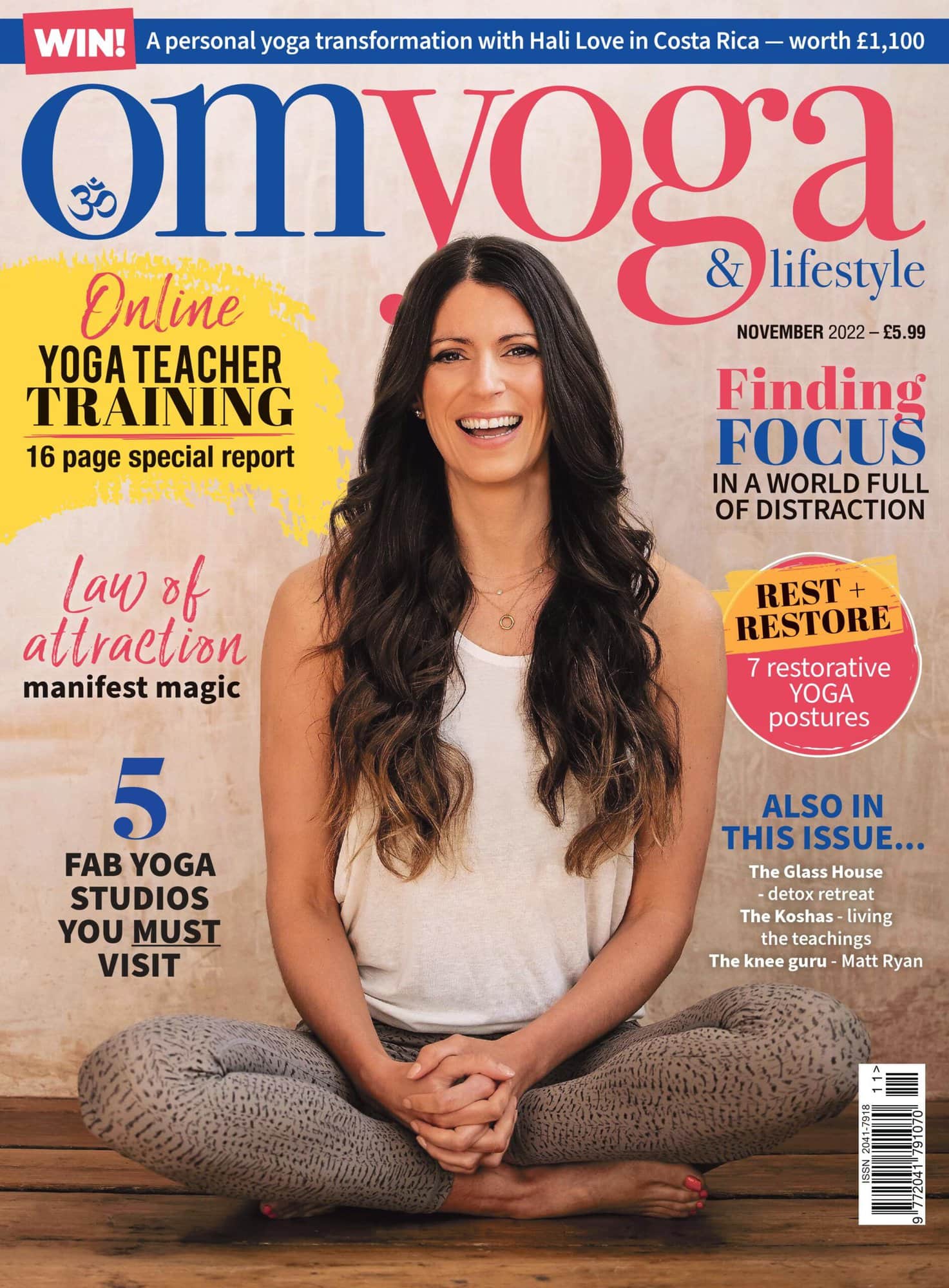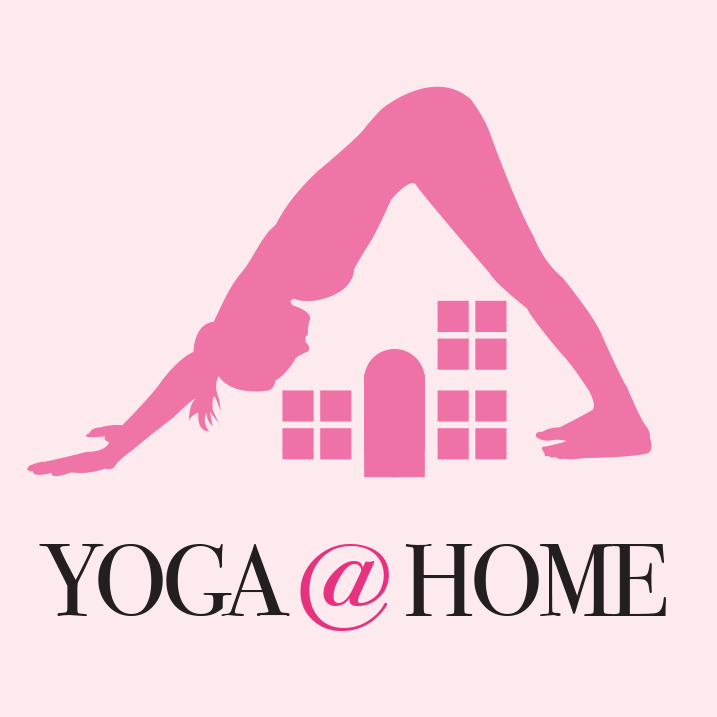
Rest + Restore
7 restorative yoga postures to rest and restore, with Bethany Watts of The Yoga Class. Words by Laura Dodd
Resting, taking time to slow down and release stress is essential for our wellbeing and maintaining balance and harmony. Prioritising this time away from our screens and the busy-ness of life through our yoga practice is an optimal way to give refuge to the mind, to engage the parasympathetic nervous system and to fully rest and restore. In restorative yoga we decrease the effort required and therefore increase the feeling of safety by eliciting the parasympathetic nervous system. With this in mind, we will hold the following restorative poses for around 5 minutes, using as many props as you can, to feel fully relaxed and supported.
Move slowly through the following postures keeping awareness of your own breath and drawing your senses inward towards your inner being. For this practice you will need as many props as you like (bolsters, cushions, two yoga blocks and blankets). Let’s begin!
Watch the mini session with Bethany Watts on the OM website or app, brought to you in partnership with The Yoga Class. Visit theyogaclass.co for the full-length class, plus 250+ more on-demand classes.
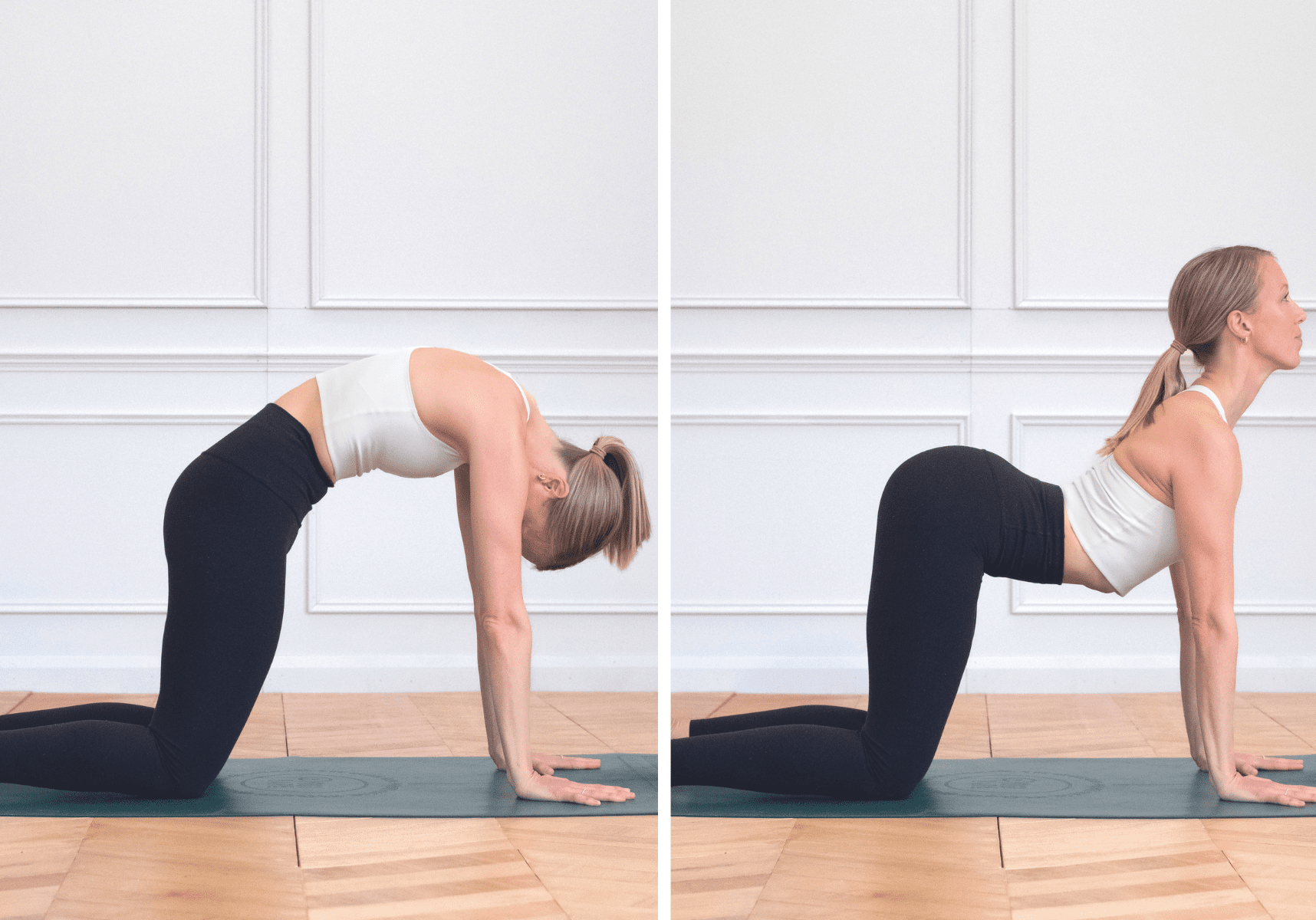
1. Marjaryasana To Bitilasana — Cat Pose To Cow pose
Come to a tabletop position, wrists underneath the shoulders and knees underneath the hips with the tops of the feet on the floor. Make sure the fingers are evenly spread, and the weight is evenly distributed between the parts of the body touching the mat. On the next exhale, push into the hands to wrap the scapula away from the spine, draw chin to chest, belly button to spine and drop the tailbone. On the inhale, lift the chest to feel like the sternum is drawing forward and up, as you simultaneously lift the tailbone and drop the belly to the mat. Move through this mobilising, spinal sequence a few times with a strong breath connection.
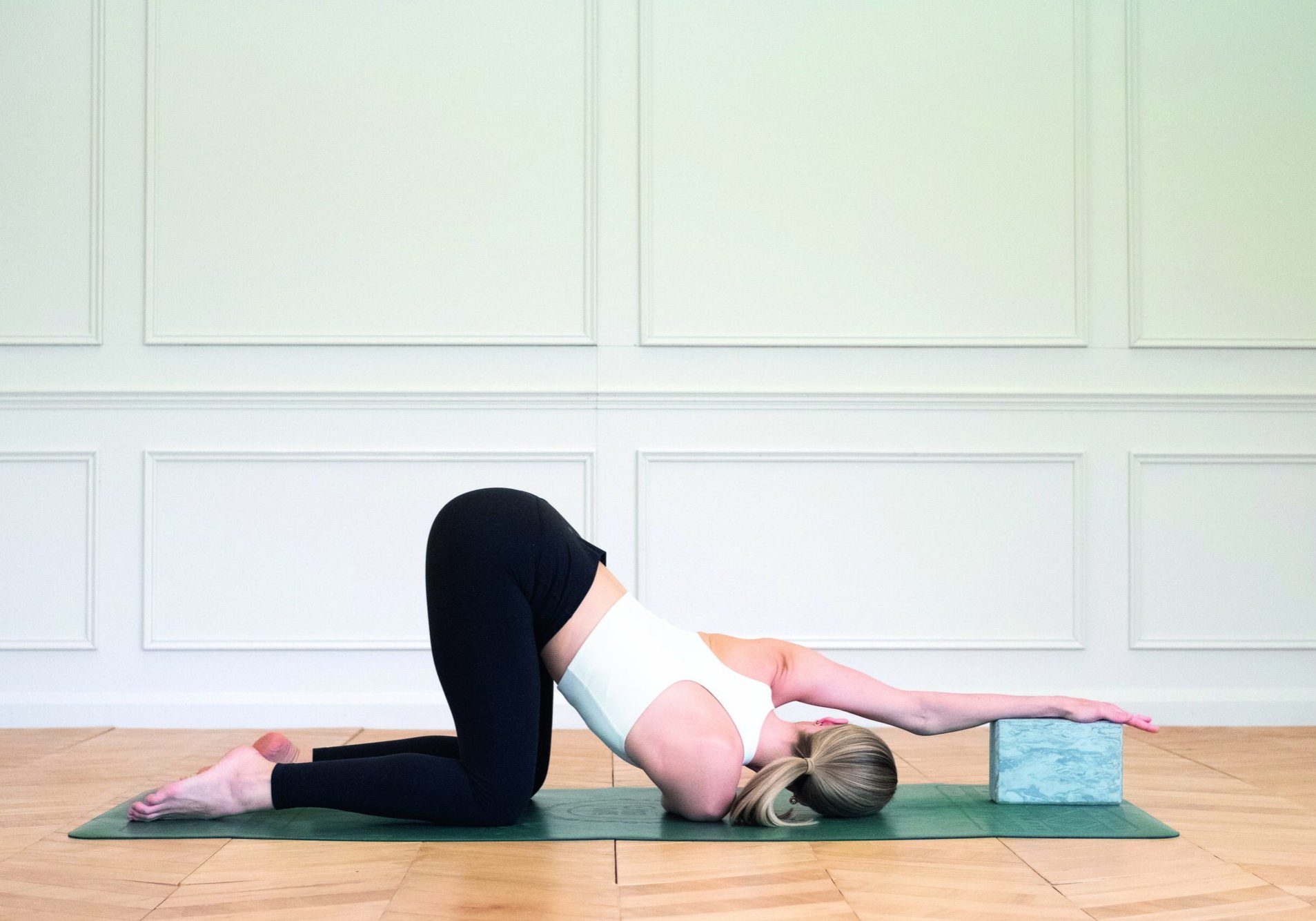
2. Parsva Balasana — Thread The Needle Pose
Come back to a tabletop position, wrists underneath the shoulders, knees underneath the hips, with a neutral spine. Inhale, sweep the right hand and gaze up to the sky, keeping the left shoulder and hips in the same position. Exhale, thread the right hand underneath the chest, eventually dropping the right shoulder and right side of the head to the mat. Variations are to wrap the left hand to right hip, reach left hand forward or keep the left hand on the mat to support. Modification options with props are to bring a block under the head or a block under the left hand. Hold for around 3-5 minutes before repeating on the other side.
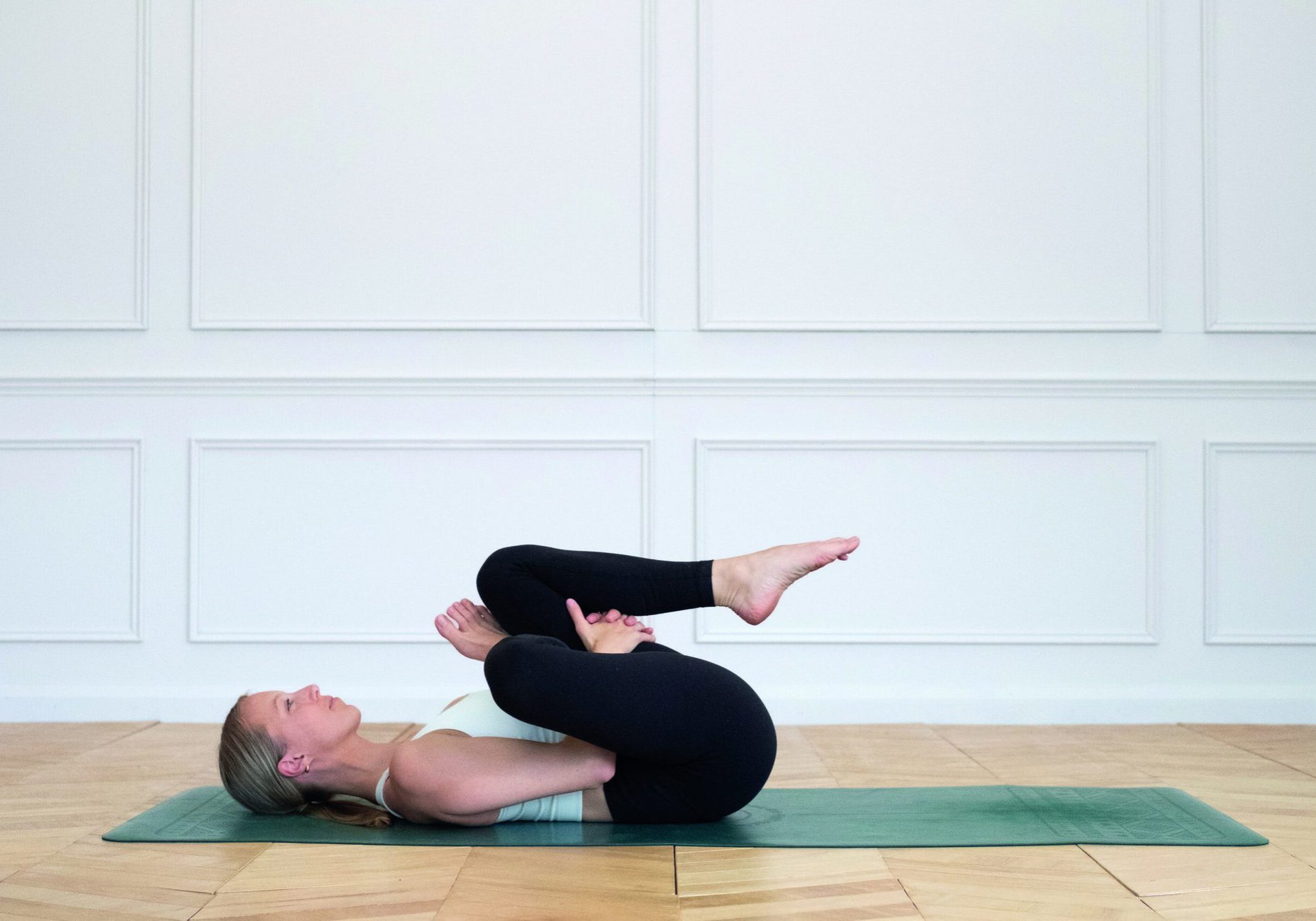
3. Supta Kapotasana — Reclined Pigeon Pose
Lie down on the mat, removing any props and allowing your head, neck and shoulders to fully relax. Ensure your knees are bent and the soles of the feet are on the mat. Lift the right knee towards you before crossing the right ankle over the left thigh. Gently draw the right knee away from you. Variations are to stay with your left foot grounded, or lift the left foot away from the mat, hugging the left thigh towards the body to increase the hip stretch. Hold for around 3-5 minutes before repeating on the other side.
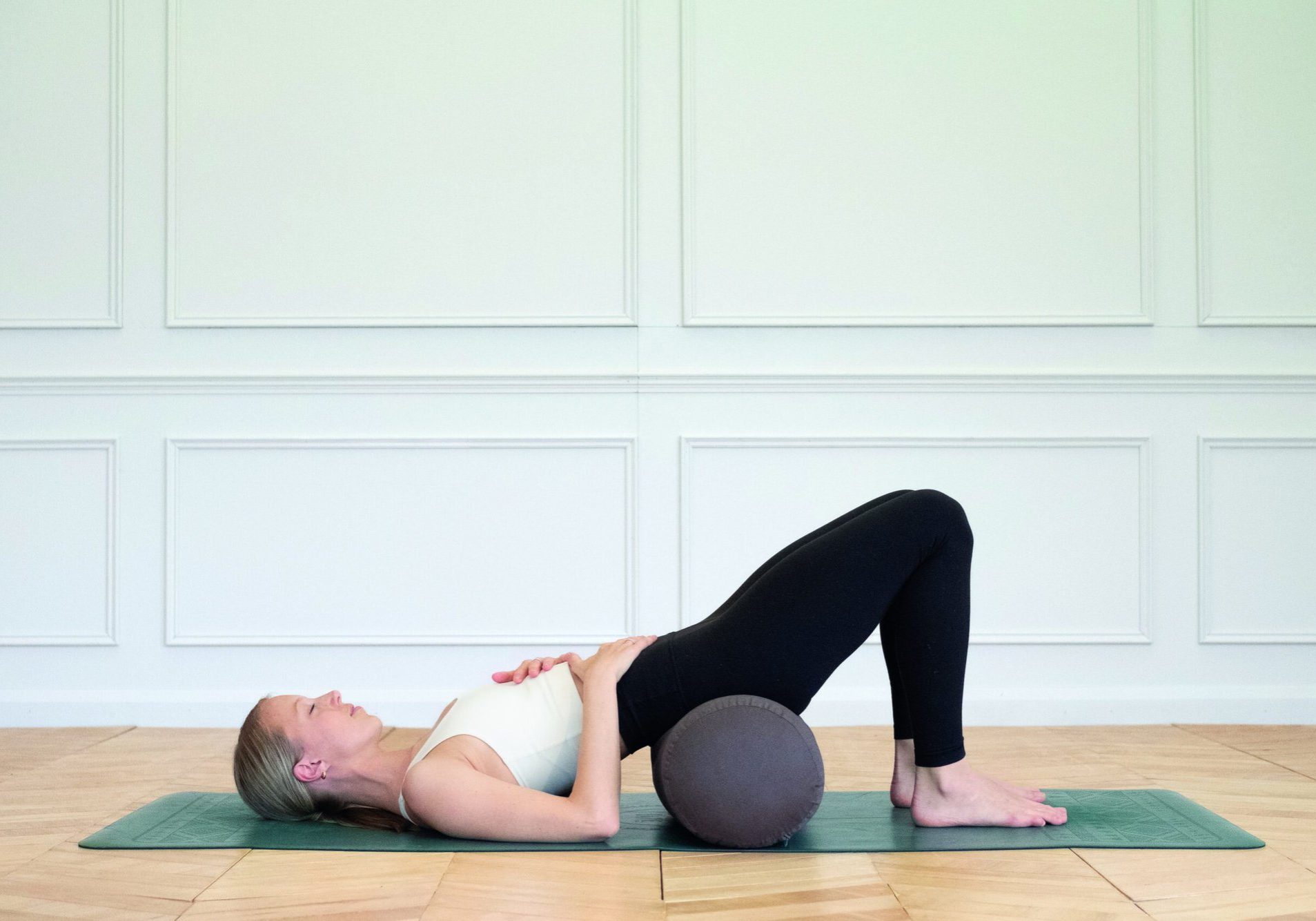
4. Setu Bandha Sarvāṅgāsana — Supported Bridge Pose
Stay lying down on the mat with the head, neck and shoulders relaxed, knees bent and feet grounded hip distance apart and under the knees. Push firmly into the feet, as you lift the lower, middle and then upper back away from the mat. Slide your chosen props, bolster, block, blocks or cushions underneath the sacrum. Make sure you are steady on your props and the head, neck and shoulders are comfortable and relaxed. Variations are to leave the knees bent or further release by lengthening the legs down the mat. Hold for around 3-5 minutes and breathe deeply.
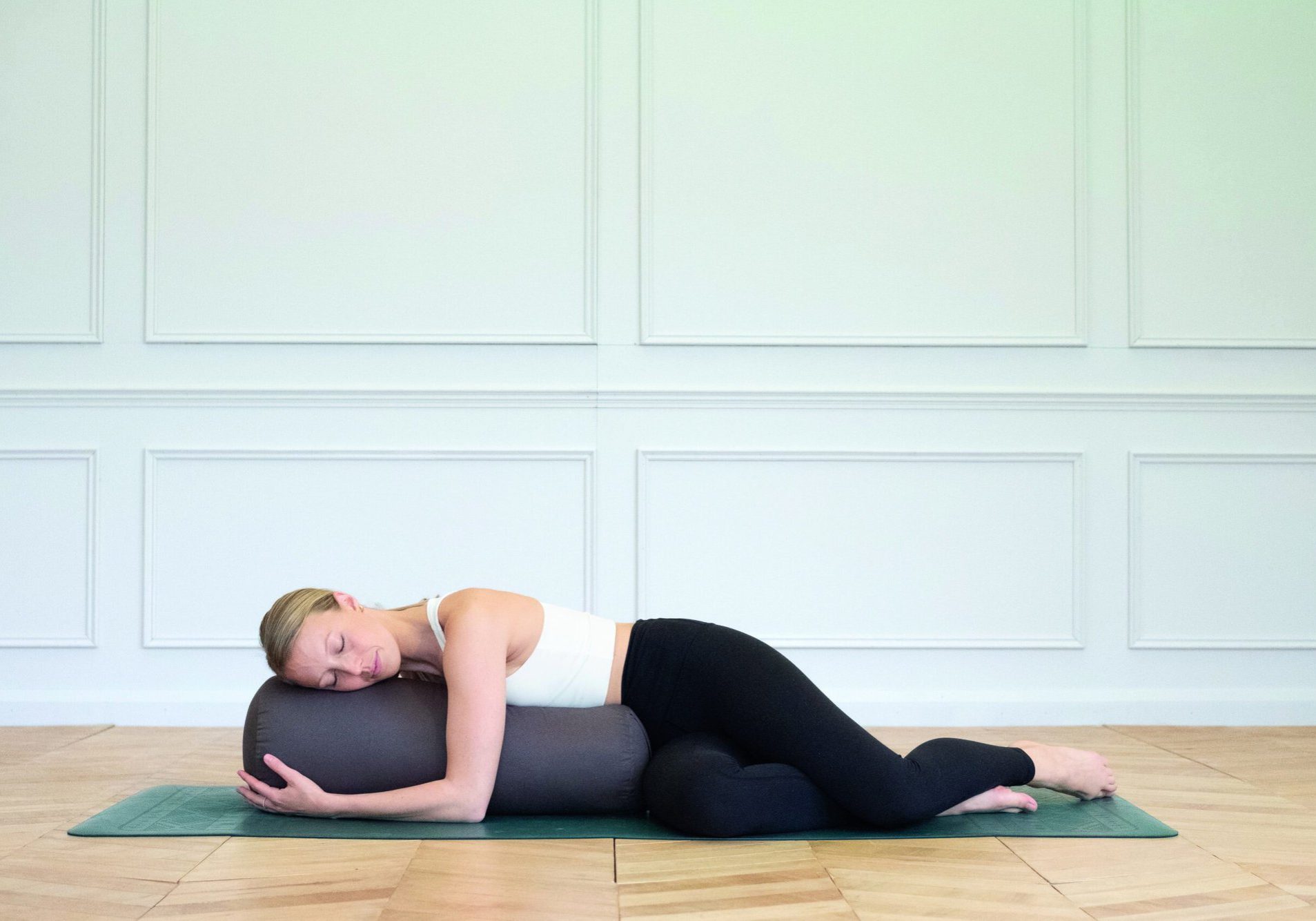
5. Salamba Bharadvajasana — Supported Bharadvaja Twist Pose
Come to sitting with your knees facing the right-hand edge of the mat and your feet to the left – the right-hand edge of the feet is grounded. Bring a bolster close towards the right hip and lengthwise on the mat. Gently turn to the right, lengthening the torso forward finding a spinal twist, before coming to rest down on the bolster. Let the hands and neck rest where feels comfortable. Modification options with props, are to lift or lower the bolster, cushions, or blocks under the torso for comfort and to bring a rolled-up blanket between the knees. Hold for around 3-5 minutes before repeating on the other side.
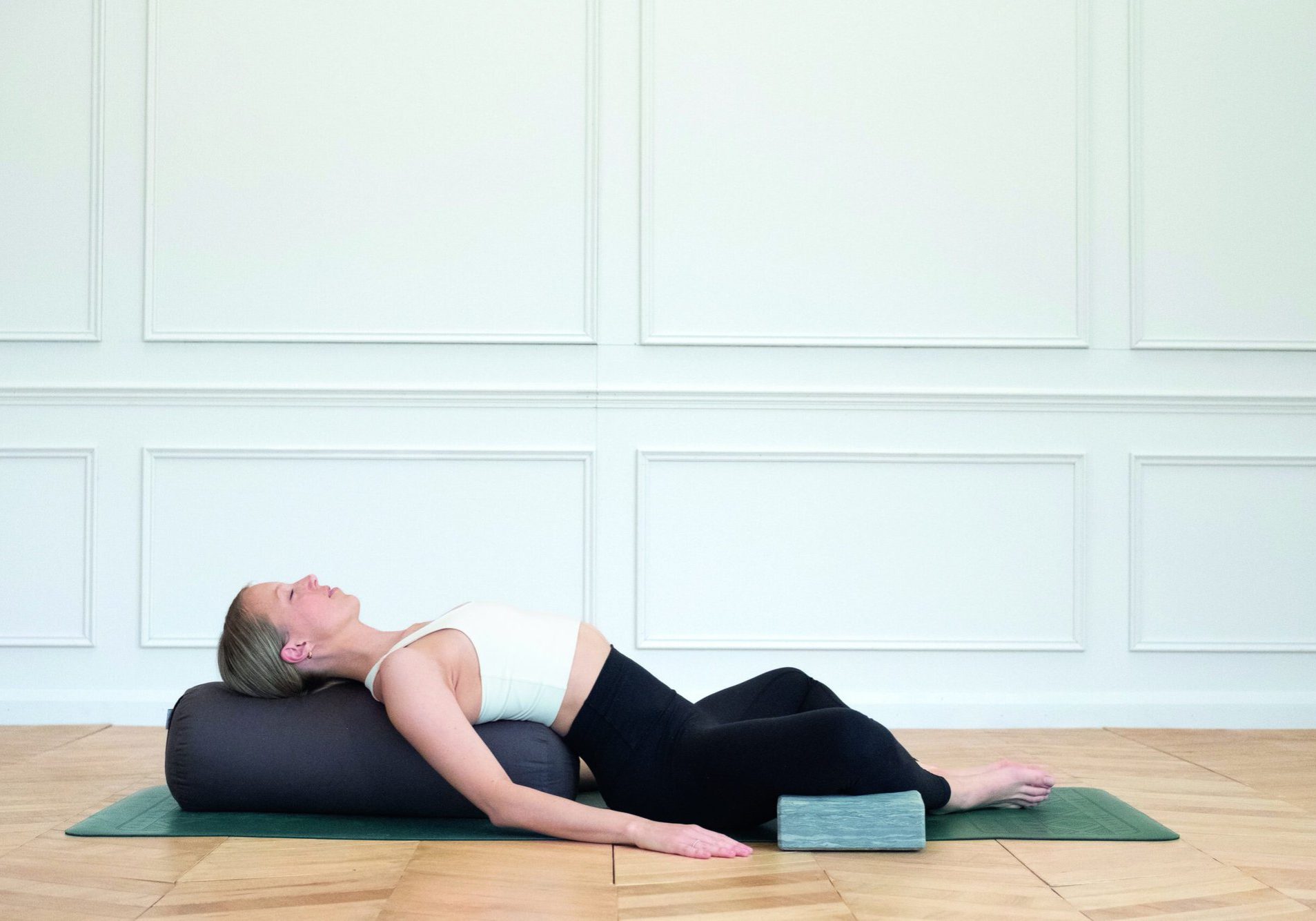
6. Supta Baddha Konasana- Supported Reclined Bound Angle Pose
Slowly come back to a seated position, this time hips are square and centralised on the mat. Draw the soles of the feet together and bring the bolster lengthwise behind the pelvis again. Gently lower the entire spine and head down onto the bolster. Modify by drawing the feet towards or away from you to find the best position for the hips and knees, bringing blocks or rolled blankets under the knees, rolled blankets around the feet or legs, or prop your back and head up higher or lower with bolsters, cushions, or blocks. Breathe deeply here for 3-5 minutes.
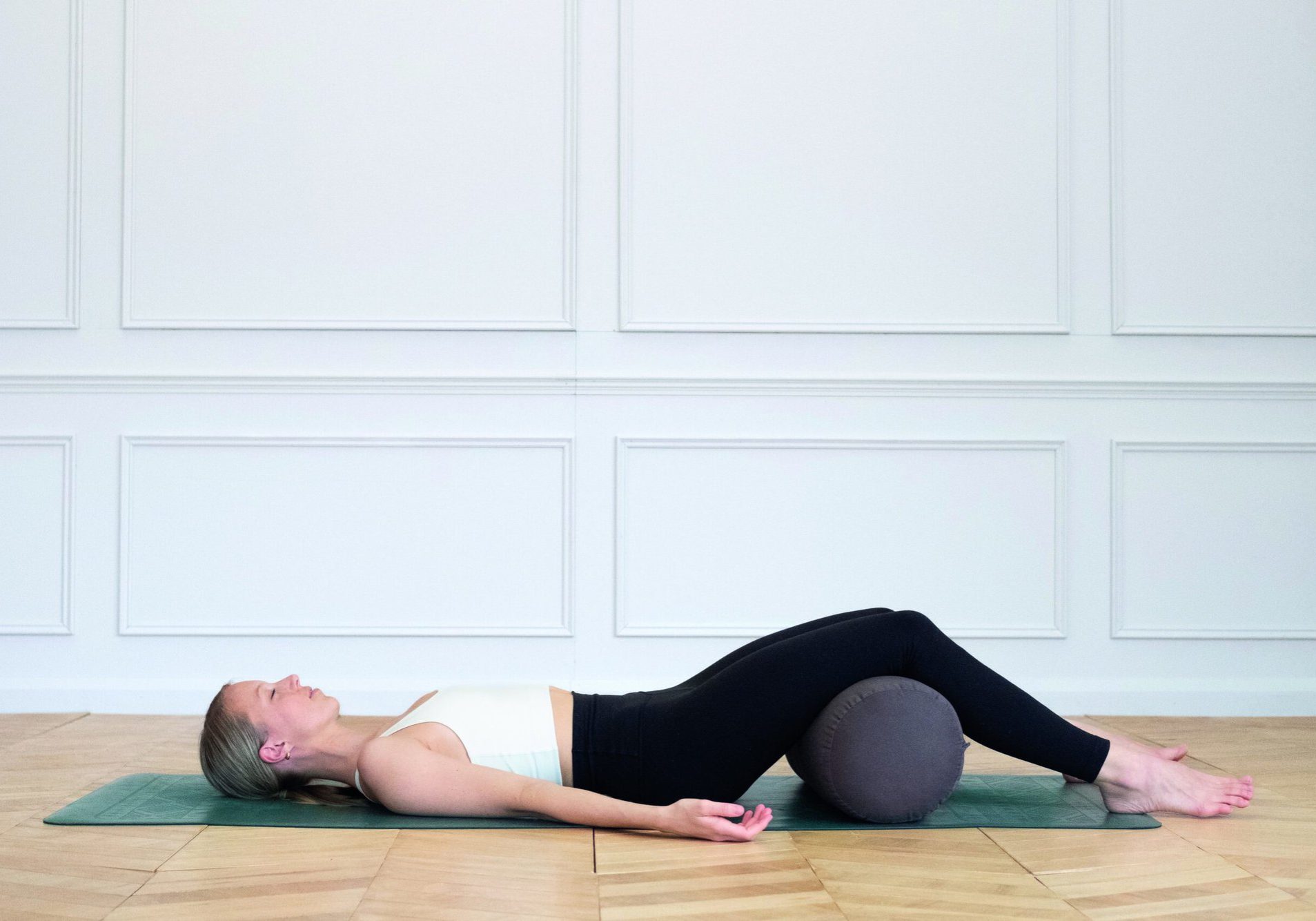
7. Savasana — Supported Corpse Pose
Again, slowly return to seated. Remove the props and bring yourself to lie flat on the mat, legs and arms wide, with the inner arches of the feet and the palms of the hands facing the sky. Modify with props as much as you like. Modification options include bringing a bolster, cushions or rolled blankets under the knees, a cushion or rolled blanket under the head, prop under the back with cushions or simply bend the knees bringing the feet to the mat. Breathe deeply here for 3-5 minutes.



